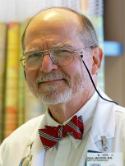Expression of granulocyte-colony-stimulating factor and its receptor in human Ewing sarcoma cells and patient tumor specimens: Potential consequences of granulocyte-colony-stimulating factor administration Journal Article
| Authors: | Morales-Arias, J.; Meyers, P. A.; Bolontrade, M. F.; Rodriguez, N.; Zhou, Z.; Reddy, K.; Chou, A. J.; Koshkina, N. V.; Kleinerman, E. S. |
| Article Title: | Expression of granulocyte-colony-stimulating factor and its receptor in human Ewing sarcoma cells and patient tumor specimens: Potential consequences of granulocyte-colony-stimulating factor administration |
| Abstract: | BACKGROUND. Ewing sarcoma (ES) is a highly vascular malignancy. It has been demonstrated that both angiogenesis and vasculogenesis contribute to the growth of ES tumors. Granulocyte-colony-stimulating factor (G-CSF), a cytokine known to stimulate bone marrow (BM) stem cell production and angiogenesis, is routinely administered to ES patients after chemotherapy. Whether ES cells and patient tumor samples express G-CSF and its receptor (G-CSFR) and whether treatment with this factor enhances tumor growth was examined. METHODS. Human ES cell lines were analyzed for expression of G-CSF and G-CSFR in vitro and in vivo. Sixty-eight paraffin-embedded and 15 frozen tumor specimens from patients with ES were also evaluated for the presence of G-CSF and G-CSFR. The in vivo effect of G-CSF on angiogenesis and BM cell migration was determined. Using a TC/7-1 human ES mouse model, the effect of G-CSF administration on ES tumors was investigated. RESULTS. G-CSF and G-CSFR protein and RNA expression was identified in all ES cell lines and patient samples analyzed. In addition, G-CSF was found to stimulate angiogenesis and BM cell migration in vivo. Tumor growth was found to be significantly increased in mice treated with G-CSF. The average tumor volume for the group treated with G-CSF was 1218 mm3 compared with 577 mm3 for the control group (P = .006). CONCLUSIONS. The findings that ES cells and patient tumors expressed both G-CSF and its receptor in vitro and in vivo and that the administration of G-CSF promoted tumor growth in vivo suggest that the potential consequences of G-CSF administration should be investigated further. © 2007 American Cancer Society. |
| Keywords: | immunohistochemistry; controlled study; human tissue; protein expression; bone neoplasms; human cell; nonhuman; mouse; animal tissue; tumor volume; animal experiment; animal model; in vivo study; in vitro study; cell line, tumor; angiogenesis; neovascularization, pathologic; stem cell; ewing sarcoma; rna; gene expression regulation, neoplastic; chemotaxis; reverse transcriptase polymerase chain reaction; granulocyte colony stimulating factor receptor; cell migration; matrigel; tumor growth; recombinant granulocyte colony stimulating factor; sarcoma, ewing's; granulocyte colony stimulating factor; granulocyte colony-stimulating factor; vasculogenesis; paraffin; embedding; granulocyte-colony-stimulating factor (g-csf); granulocyte-colony-stimulating factor receptor (g-csfr); receptors, granulocyte colony-stimulating factor |
| Journal Title: | Cancer |
| Volume: | 110 |
| Issue: | 7 |
| ISSN: | 0008-543X |
| Publisher: | Wiley Blackwell |
| Date Published: | 2007-10-01 |
| Start Page: | 1568 |
| End Page: | 1577 |
| Language: | English |
| DOI: | 10.1002/cncr.22964 |
| PUBMED: | 17694551 |
| PROVIDER: | scopus |
| DOI/URL: | |
| Notes: | --- - "Cited By (since 1996): 11" - "Export Date: 17 November 2011" - "CODEN: CANCA" - "Source: Scopus" |
Altmetric
Citation Impact
BMJ Impact Analytics
Related MSK Work




